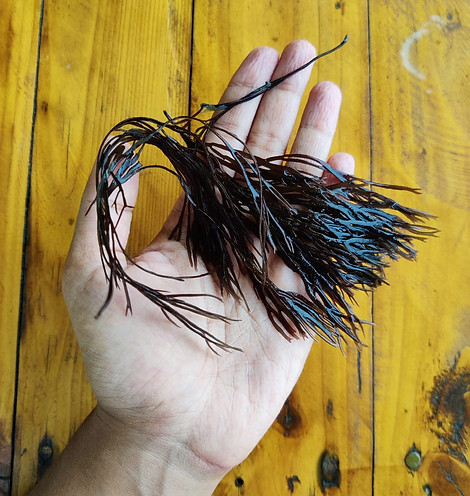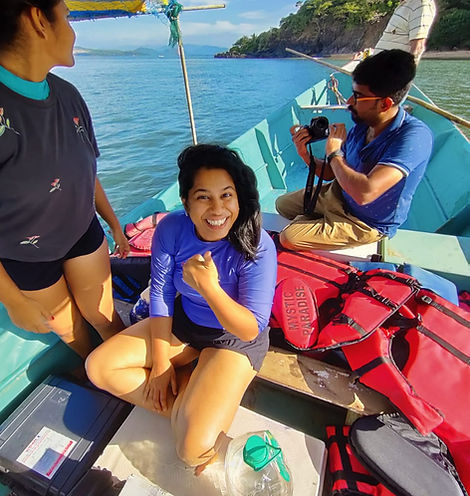Exploring Native Seaweed Farming along the West Coast of India
May 2022
Introduction
In an increasingly disruptive and climate uncertain world, ocean farming is becoming a game of high risk and low return. For years we have exploited our ocean for food and natural resources, to the point of systemic breakdown. But, there are still sustainable and regenerative ways in which to work with our ocean. Seaweed farming is one such instance! Seaweed is amongst the fastest growing biomass on the planet and is versatile in its uses. It produces food, minimises environmental damage, mitigates climate change through the absorption of carbon and nitrogen, and cleans up the oceans at the same time. Incredibly, farming requires zero input which means that ocean farmers don’t need to add anything into the system in order for the algae and animals to thrive.
We partnered with The Good Ocean, an ocean-based business focused on seaweed in Goa, to explore production and harvesting of locally found seaweed species, specifically Gracilaria (a red seaweed) and Sargassum (a green seaweed). Our pilot project was located a stones throw-away from Gokarna, in the postcard perfect Aghanashini Estuary in Karnataka, and ran from October 2021 to April 2022.
EcoNiche was the early-stage investor in this project. Our aims were to understand the investment case for self-sustaining regenerative ocean-based farming solutions to the climate, biodiversity and local coastal livelihood crises, and support local women-led businesses.
(Read more about this pilot initiative in Condé Nast Traveller, The Times of India and The Locavore.)


.jpeg)
Our Learnings
Piloting the seaweed farm was fun, despite the significant challenges we faced in establishing it. We learned a significant amount over the last 6 months in terms of the importance of:
-
Location Identification
-
Partner Selection
-
Evidence-based Planning & Development
-
Monitoring & Management of Farm (Operations)
-
Impact Monitoring





Moving Forward
Eventually we hope to develop small-scale sustainable seaweed farming in Goa, specifically models to:
-
upscale and replicate the farms,
-
link small and medium-scale seaweed farmers to new markets by connecting farmers, buyers, and consumers across diverse industries in ways that support thriving local farms, economies and coastal communities, and
-
compensate seaweed farmers in fair and just ways for the climate-positive role of their farms, including carbon and nitrogen removal, as well compensation for other ecosystems services provided, such as water filtration and habitat restoration.
Goa will be allocated 11.43 crores under the Central Government's Pradhan Mantri Matsya Sampada Yojana (PMMSY) scheme for expanding seaweed cultivation, as well as the establishment of seed banks, genetic improvement programmes for high yielding cultivars, seaweed parks and allied seaweed production activities. However, there is little foundation on which to base our work. To date no updated systematic studies on seaweed species diversity, abundance and seasonal changes have been conducted in the state. Additionally, there is no State-level roadmap to support action, nor any governance, regulatory or policy framework to ensure sustainable and responsible implementation of seaweed farming. We must tread carefully in order that seaweed-based farming actions deliver on promises to positively address the climate and biodiversity crises, and don't instead become a cautionary tale.
by Nisha DSouza

.jpeg)
